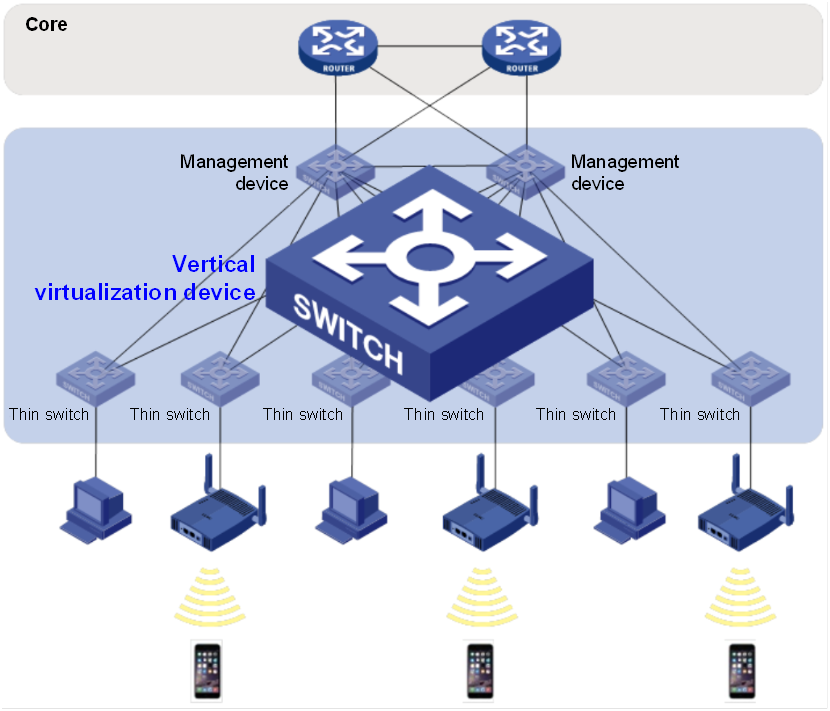H3C Wired Campus Network Solution for Elementary and Middle Schools
H3C campus network solution for elementary and middle schools
The thin switch solution with H3C ES series adopts the vertical virtualization technology. The thin switch is used as an access device to connect to the endpoint, and the management device configures and manages the entire vertical virtualization system. Based on the vertical virtualization technology, all devices at the access layer are virtualized into a distributed access device, simplifying the network topology and reducing network management costs.
Figure 1-1 Thin switch solution with H3C ES series

The thin switch solution with H3C ES series has the following advantages:
· Easy to scale: Access ports can be increased by adding thin switches, which can be further cascaded to increase the number of ports and enhance networking flexibility.
· Rapid deployment
After the automatic configuration function is enabled on the management device, the management device can detect thin switches whose uplink ports are connected to the management device, and then deliver the configuration to the thin switches to finish the construction of the vertical virtualization system.
· Easy to replace the faulty device
If a thin switch fails, the faulty device needs to be replaced with a device of the same model without reconfiguration. The management device will deliver the configuration again after the new device comes online, reducing the network maintenance workload and service interruption time.
· Simplified network topology and reduced difficulty in management
· The entire vertical virtualization system acts as a logical device for uplink and downlink devices. The simplified network requires no use of MSTP, VRRP, and other protocols with a high degree of complexity of configuration and maintenance.
· The entire vertical virtualization system also acts as a management node. The entire system can be managed on the management device.
· Low cost: A thin switch forwards the received packets to the management device for processing, and the management device makes forwarding decisions, so a lower-cost device can be used to meet higher-performance networking requirements.


